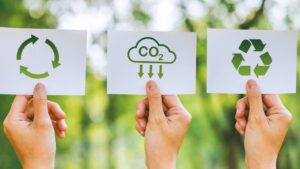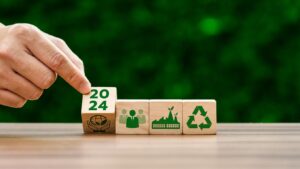Sustainability of Development Class 10
 Sustainability of development isn’t just a buzzword; it’s a crucial concept that shapes the future of our planet. For Class 10 students, understanding this topic means grasping how current actions impact long-term ecological balance and societal well-being. It’s about learning to make choices that meet today’s needs without compromising the ability of future generations to meet theirs.
Sustainability of development isn’t just a buzzword; it’s a crucial concept that shapes the future of our planet. For Class 10 students, understanding this topic means grasping how current actions impact long-term ecological balance and societal well-being. It’s about learning to make choices that meet today’s needs without compromising the ability of future generations to meet theirs.
Incorporating sustainability into education at an early stage empowers students to think critically about environmental issues and sustainable practices. It equips them with the knowledge to promote responsible consumption, reduce waste, and advocate for policies that protect natural resources. This foundational understanding is essential as they become the decision-makers of tomorrow, ensuring a balanced and sustainable world.
Understanding Sustainability
Sustainability refers to the ability to maintain or improve the quality of human life while living within the Earth’s carrying capacity. It encompasses three main pillars: environmental, economic, and social sustainability. Environmental sustainability involves conserving  natural resources and reducing pollution. Economic sustainability focuses on promoting stable, inclusive, and sustainable economic growth. Social sustainability aims to foster well-being, education, and equality for all individuals.
natural resources and reducing pollution. Economic sustainability focuses on promoting stable, inclusive, and sustainable economic growth. Social sustainability aims to foster well-being, education, and equality for all individuals.
Each aspect of sustainability connects and interacts with the others. For instance, reducing resource consumption (part of environmental sustainability) can lead to cost savings and job creation (economic sustainability) while enhancing community well-being (social sustainability). Effective sustainability practices often balance these three pillars to achieve long-term benefits.
Importance Of Sustainable Development
Sustainable development ensures that resources are available for future generations. This approach balances environmental, economic, and social factors to create long-term benefits.
Environmental Impact
Sustainable development reduces environmental degradation. Strategies like renewable energy, reforestation, and waste reduction minimize pollution and conserve natural habitats. For instance, solar and wind energy decrease reliance on fossil fuels, lowering greenhouse gas emissions.
Economic Benefits
Economies grow more stably with sustainable practices. Investment in green technologies, such as electric vehicles or energy-efficient buildings, creates jobs and stimulates innovation. Reduced resource consumption also cuts costs for businesses, leading to economic resilience.
Social Implications
Social equity improves through sustainable development. Ensuring access to clean water, education, and healthcare enhances quality of life for communities. Inclusive growth reduces inequality and fosters social stability, contributing to a more harmonious society. For example, educational programs on sustainability empower individuals to advocate for responsible policies.
Key Concepts In Class 10 Curriculum
The Class 10 curriculum includes essential concepts on sustainability to build a strong foundation for students. These topics cover renewable resources and conservation measures, providing practical solutions to environmental challenges.
Renewable Resources
Renewable resources are naturally replenished over time. They include sunlight, wind, rain, tides, and geothermal heat. Solar power can be used in homes and industries, while wind turbines generate electricity. Hydropower uses water in dams to create energy. These resources reduce dependency on fossil fuels, minimizing pollution and conserving natural habitats.
Conservation Measures
Conservation measures aim to protect natural resources. They encompass techniques like reforestation, energy efficiency, and water  conservation. Reforestation restores degraded lands and supports biodiversity. Energy-efficient appliances lower consumption and reduce greenhouse gas emissions. Water-saving methods, like rainwater harvesting, ensure sustainable use.
conservation. Reforestation restores degraded lands and supports biodiversity. Energy-efficient appliances lower consumption and reduce greenhouse gas emissions. Water-saving methods, like rainwater harvesting, ensure sustainable use.
Promoting these measures helps preserve resources for future generations, fostering environmental, economic, and social stability.Resource limitations present significant challenges to sustainability. Many developing nations struggle with inadequate access to necessary resources like clean energy, water, and technology. Limited financial resources also hamper the ability to invest in sustainable infrastructure. For example, renewable energy projects require substantial capital, which may not be available in cash-strapped economies. Moreover, technological gaps hinder the adoption of efficient waste management and energy systems. To address these issues, international cooperation and funding mechanisms are vital to bridge resource gaps and promote sustainable practices globally.
Sustainability of development is a critical topic for Class 10 students, laying the groundwork for future decision-makers. By understanding the interconnected pillars of environmental, economic, and social sustainability, students are better equipped to make responsible choices. Educational programs play a pivotal role in fostering these values, ensuring that the next generation is prepared to tackle pressing global challenges. Real-world examples and case studies provide practical insights, highlighting both successes and areas needing improvement. As the world continues to evolve, the emphasis on sustainable practices will be essential in creating a balanced and harmonious society.



